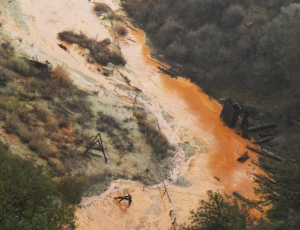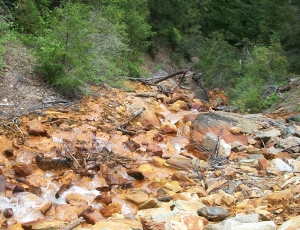Two abandoned mines and their environs in California are being considered to be added to the Superfund National Priorities List, according to the U.S. Environmental Protection Agency.


The EPA says the New Idria Mercury Mine site located in San Benito County, affects waterways leading to the San Joaquin River and San Francisco Bay, and the Blue Ledge Mine in Siskiyou County discharges into streams in the Rogue River-Siskiyou National Forest and ultimately the Applegate Reservoir, a popular recreation area.
Nahal Mogharabi, press officer at the EPA San Francisco office, says a timeframe for the procurement and construction phases will be released as soon as investigations of the toxic sites are complete.
New Idria is an abandoned mercury mine located approximately 64 mi southeast of Hollister. The EPA says past mining operations have resulted in mercury contamination and acid mine drainage in San Carlos Creek, Silver Creek and a portion of Panoche Creek, at levels toxic to aquatic organisms. Environmental impacts extend more than 15 mi to creeks and wetland areas, endangered species habitat, and ultimately the San Joaquin River and the San Francisco Bay.
The Blue Ledge Mine is located on privately owned land surrounded by the Rogue River-Siskiyou National Forest, approximately 3 mi south of the Oregon-California border. Copper, cadmium, other metals and acid mine drainage from past copper and zinc mining operations have contaminated sediments and surface water at levels that are toxic to aquatic organisms, according to the EPA.
In 2006 the EPA says it performed an emergency response action to stabilize waste rock that was releasing into Joe Creek, just downstream from Blue Ledge Mine. In 2010, the U.S. Forest Service received $12.4 million in American Reinvestment and Recovery Act funds plus $1.4 million from the ASARCO Environmental Trust to place the waste rock into an on-site repository. This work began last summer.
Mogharabi says that to date, there have been 1,627 sites listed on the NPL since 1980, 128 of which are in California.
Nationally, cleanup is underway or complete at 1,100 of the 1,627 sites.
With all Superfund sites, the EPA says it tries to identify and locate the parties potentially responsible for the contamination. For sites without financially viable potentially responsible parties, listing makes the sites eligible for federal funds that will enable completion of the cleanup.

